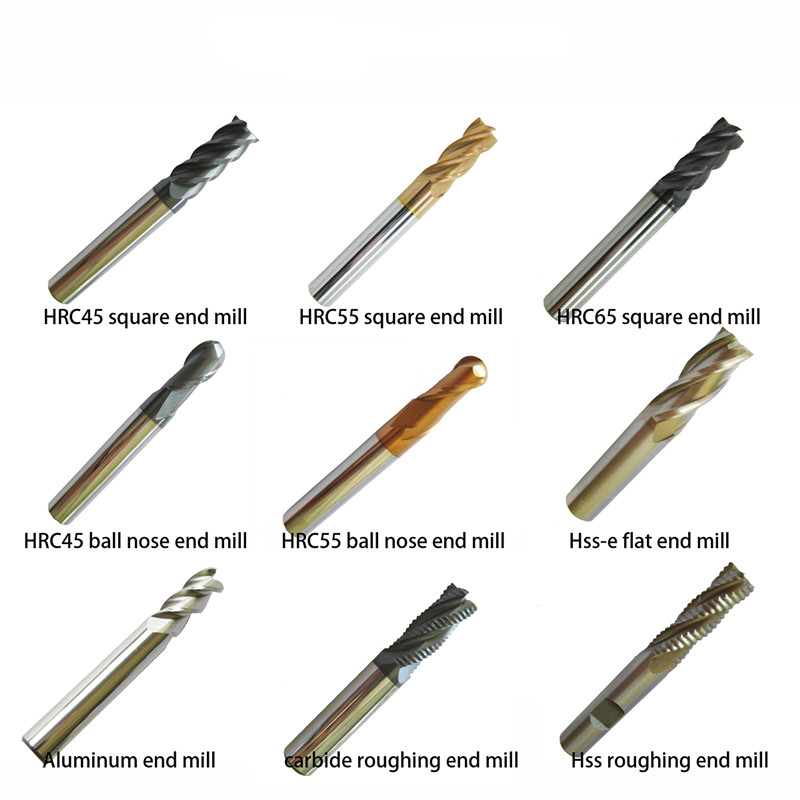In the process of using CNC machines, how to make the right choice between cis-milling and counter-milling?

How do you define forward milling and reverse milling?
As shown in the figure below, the tool cutting speed and the workpiece movement direction is the same for forward milling, and the tool cutting speed and the workpiece movement direction is opposite for reverse milling.
Features of Forward and Reverse Milling
Effect on cutting forces
The vertical cutting force acting on the workpiece when milling against the workpiece is always upward, there is a tendency to lift the workpiece, easy to cause vibration, affecting the clamping of the workpiece, this situation is particularly prominent in milling thin-walled and rigid workpiece.
Milling when the vertical cutting force acting on the workpiece always presses down on the workpiece, which is beneficial to the clamping of the workpiece.
Effect on elastic deformation of the tool
The use of vertical milling cutter downward cutting contour of the workpiece, the workpiece on the tool reaction force points to the direction of the tool, the elastic deformation of the tool to produce tool "let cutter" (undercut) phenomenon.
The use of end mill cutter reverse milling cutting the contour of the workpiece, the workpiece on the tool reaction force points to the contour of the internal, elastic deformation of the tool so that the tool produces "Gnawing" (overcutting) phenomenon. The smaller the diameter of the tool, the longer the tool bar extends, the more obvious the phenomenon of "let cutters" and "chewing cutters".
Therefore, when roughing using down milling, can leave less finishing allowance. Roughing using reverse milling, must leave more finishing allowance to prevent "chewing tool" produce scrap workpiece.
How do I choose between forward milling and reverse milling?
Selection principle
The use of downward milling, first of all, the requirements of the machine with a clearance mechanism, can reliably eliminate the table feed screw and the gap between the nut, in order to prevent the milling process produced vibration.
It is ideal if the table is hydraulically driven. Secondly, the requirements of the blank surface of the workpiece without hard skin, the process system should have enough rigidity. If the above conditions can be met, should try to use downward milling, especially for milling of difficult materials, the use of downward milling can reduce cutting Deformation, reduce the cutting force and cutting power.
Part roughing, usually using the reverse milling cutting and processing methods; finishing, in order to prevent "gnawing", usually used along the milling processing methods.
Therefore, regardless of whether the internal or external picking contour is machined, the machining method using left-compensated programming milling with a tool radius is cis-milling, while the machining method using right-compensated programming milling with a tool radius is reverse milling.
When a disk milling cutter is used to machine a flat contour, when the cutting width of the tool is greater than 50% of the tool diameter, there is both cis-milling and counter-milling in the cutting process.
CNC milling machine selection of milling and counter-milling
CNC machine tools generally have a clearance function, the backlash of the transmission mechanism is small, and most of the CNC machine tools are used for part finishing. Therefore, CNC milling is usually used when shun milling processing, that is, contour machining using tool radius compensation for left programming and machining.
Contact: Jacky Wang
Phone: +86 14714816052
Tel: +86 14714816052
Email: jacky@cncnctools.com
Add: Floor 1, Shixi Industrial area, Canton, Guangdong, China. 510288